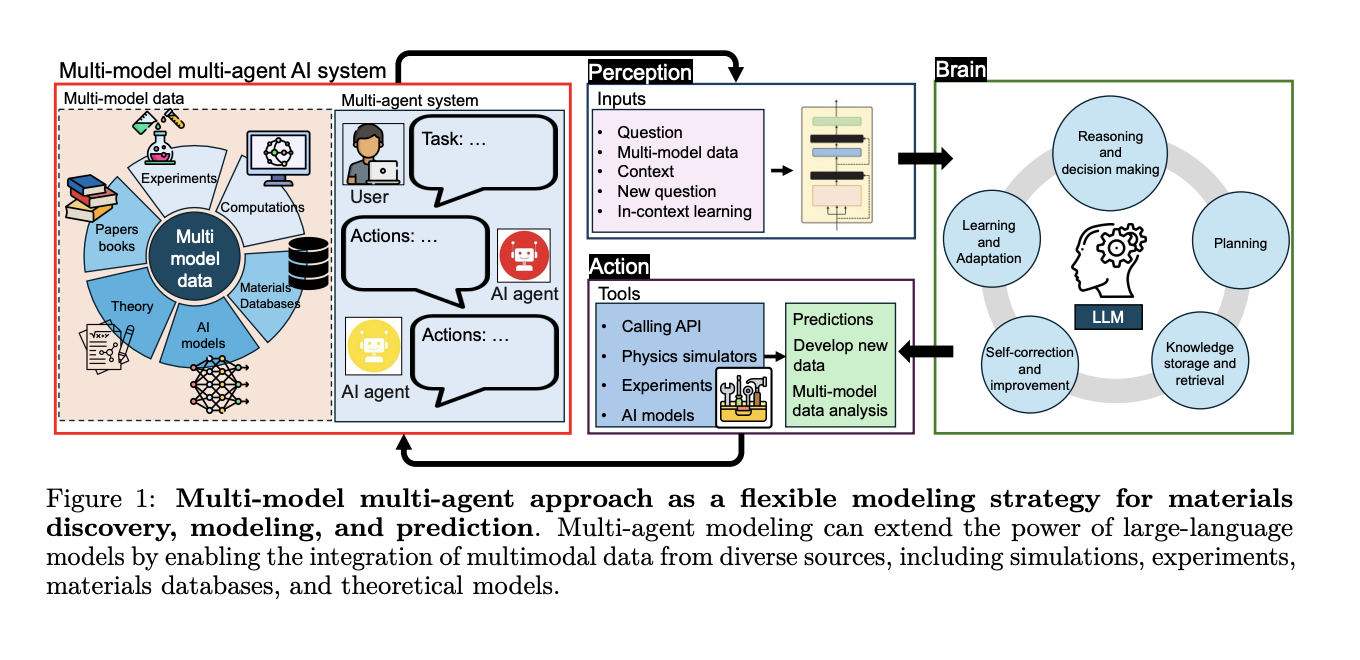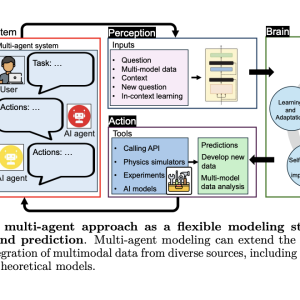

The multi-scale difficulty of designing new alloys calls for a comprehensive strategy, as this procedure includes gathering pertinent information, using advanced computational methods, running experimental validations, and carefully examining the results. Because the tasks involved in this complex workflow are intricate, it has traditionally taken a lot of time and was mostly completed by human professionals. Machine Learning (ML) is a viable way to accelerate alloy design.
A unique strategy that takes advantage of the distinct advantages of several AI agents operating independently in a dynamic environment has been used to overcome these constraints. Together, these agents can handle the intricate duties associated with materials design, resulting in a more adaptable and responsive system. A team of researchers from MIT propose AtomAgents. It is a generative AI framework that takes into account the laws of physics. It blends the intelligence of large language models (LLMs) with the cooperative capabilities of AI agents that are experts in different fields.
AtomAgents functions by dynamically combining multi-modal data processing, physics-based simulations, knowledge retrieval, and thorough analysis across many data kinds, such as numerical findings and pictures from physical simulations. The system can handle difficult materials design problems more successfully because of this cooperative effort. AtomAgents have been shown to be capable of designing metallic alloys that have better qualities than pure metal counterparts on their own.
The outcomes produced by AtomAgents demonstrate its capacity to forecast essential properties in a range of alloys precisely. A noteworthy discovery is the pivotal function of solid solution alloying in the creation of sophisticated metallic alloys. This knowledge is especially helpful since it directs the design process to produce materials with improved performance.
The team has summarized their primary contributions as follows.
- The team has created a system that efficiently blends physics knowledge with generative artificial intelligence. This integration is best seen in the design of crystalline materials, where simulation accuracy is guaranteed by using the general-purpose LAMMPS MD code.
- Text, pictures, and numerical data are just a few of the forms and sources of data that this model is excellent at combining. The model is more flexible and useful in a variety of study topics because of the multi-modal approach, which also makes it capable of managing complicated datasets.
- Using atomistic simulations, the model demonstrates superior capabilities in retrieving and applying physics. Numerous intricate computer studies have verified the validity of these simulations, attesting to the model’s dependability and efficiency in material design.
- The AtomAgents framework reduces the need for human intervention by autonomously creating and managing complicated workflows. This is especially useful in high-throughput simulations, where the model can run independently without much supervision.
- This approach makes cutting-edge research more accessible by enabling operations through simple textual input, so enabling researchers without in-depth expertise in crystalline materials design to conduct advanced simulations.
In conclusion, the AtomAgents framework greatly improves the effectiveness of challenging multi-objective design jobs. It creates new opportunities in a number of areas, such as environmental sustainability, renewable energy, and biological materials engineering. This platform lays the path for the next generation of high-performance materials by automating and optimizing the design process.
Check out the Paper and GitHub. All credit for this research goes to the researchers of this project. Also, don’t forget to follow us on Twitter and join our Telegram Channel and LinkedIn Group. If you like our work, you will love our newsletter..
Don’t Forget to join our 48k+ ML SubReddit
Find Upcoming AI Webinars here
The post AtomAgents: A Multi-Agent AI System to Autonomously Design Metallic Alloys appeared first on MarkTechPost.